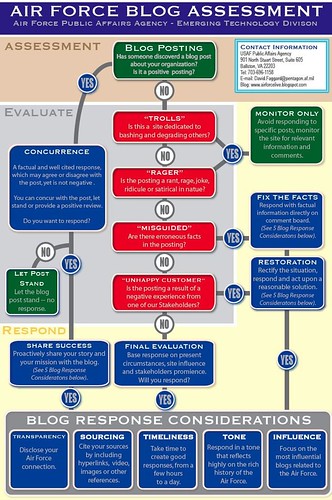
I'm one of those lucky young adults that still receives periodic care packages from her parents containing the latest mail still arriving at their house for me, a health tips newsletter (my Dad is a
hospital chaplain, so he's very keyed in to these things), cookies or brownies, Trident chewing gum and newspaper clippings my Dad has read and saved for me.
The clippings usually fall into one of two categories: news about my high school or PR/Social Media/Marketing. (Dad sent me
the article about Doritos and the Super Bowl, too.)
Yesterday's care package contained a clipping from last Monday's
USA Today, "How public relations helps steer opinion and the news."
The article by Seth Brown also
ran online – it's introducing a new book by PR industry veterans, Trevor Morris and Simon Goldsworthy, who just
published,
PR: A Persuasive Industry? Spin, Public Relations and the Shaping of the Modern Media.
According to Seth Brown, the book calls PR amoral, a tool for good or evil purposes (I guess government propaganda might fall on the "evil" side). I like this quote from the article:
"A group that often derides PR professionals is journalists, who often see themselves as truth-seekers forced to deal with flacks in order to get information. Yet without the PR industry, Morris and Goldsworthy argue, there would be little news."
Yep, definitely run into that quite a bit... the love-hate relationship PR pro's face with journalists overwhelmed with emails, text messages, IM's, Twitter DM's, phone calls, Facebook pokes and more.
I haven't read the book,
which has been called an "intelligent guidebook" to PR, rather than a textbook, but I'll definitely add it to my reading list.
What I find interesting is the insight Morris and Goldsworthy have provided with regards to how PR actually affects news cycles. For example, they cite a study which found that more than half of the stories in an edition of
The Wall Street Journal were based on press releases. They also argue that PR is essential for a free press to function. Interesting, huh?
And, last but not least, one more thought to digest for anyone working in public relations, interested in good PR or looking for PR services:
"Perhaps the most alluring thing about being a PR consultant is that no formal training is required: no certification, no universally acknowledged test, no courses offered at many prestigious universities (although some colleges offer PR studies). Essentially, there are no barriers to entry... PR [is] 'a wholly legitimate aid to the exchange of information and ideas in society.'"
Of course, they are clearly biased, but so am I. As a Stanford graduate holding a degree in History, Literature and the Arts, I appreciate the recognition that PR is less about the trade and more about strategy and the ability to create an interesting, relevant and timely story that is newsworthy, informative and supportive of real business goals for the client company.
If you're short on time or money and can't get to the book, at least read the article in
USA Today. Thanks again for the great find, Dad!


